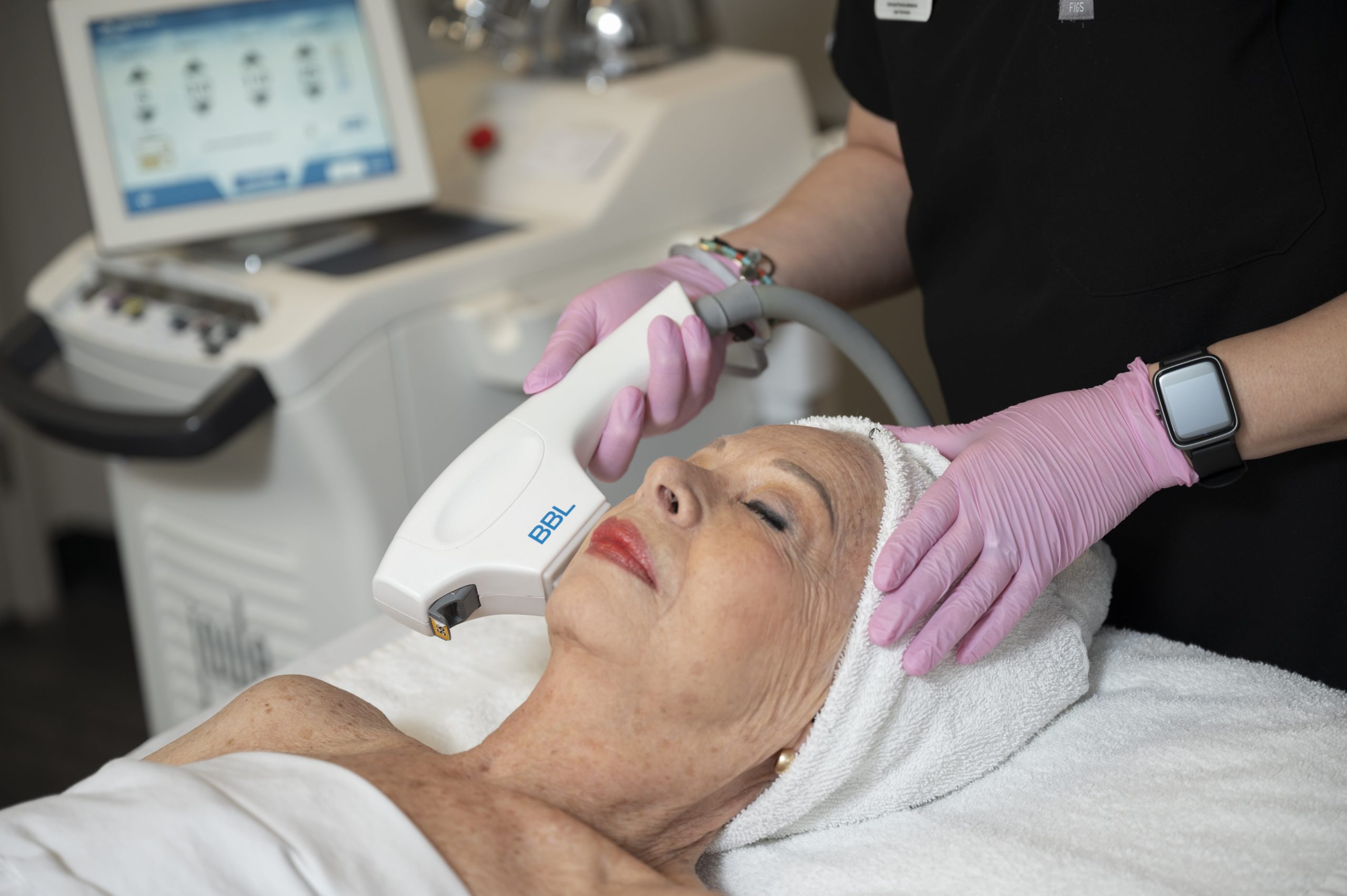BBL is not a laser-based treatment but a form of pulsed light therapy that diminishes the look of freckles, age spots, brown patches, broken capillaries, melasma, and a range of other skin issues.
Broadband light (BBL) therapy, often referred to as a photofacial, is a generally safe and effective option for many cosmetic skin concerns.
Dermatologists employ this relatively gentle procedure to:
- address conditions like rosacea, spider veins, and acne
- reduce the visible effects of sun damage, fine lines, and wrinkles
- balance skin tone and improve texture

Continue reading to learn about BBL’s uses, how well it works, and what to expect during and after treatments.
What is BBL used for?
BBL is a pulsed light therapy designed to brighten and improve your complexion by targeting skin concerns and triggering your body’s collagen production. Collagen is a structural protein that helps support skin integrity, among other roles.
Typically, BBL is applied to the face, neck, chest, arms, and hands — though it can be used on virtually any area.
BBL treatments help revitalize skin that’s been affected by factors such as:
- sun exposure
- harsh skincare products
- environmental pollution
Clinicians use BBL for conditions including:
- rosacea
- acne
- vascular lesions
BBL can improve skin firmness, elasticity, and pigmentation. It may also stimulate the skin’s natural repair processes to encourage healthier skin renewal.
BBL may also lessen the appearance of:
- sun damage
- fine lines
- wrinkles
- scarring
- enlarged pores
- dull complexion
- pigmented spots (freckles, age spots)
- redness
- uneven tone and texture
- loose or sagging skin
- melasma and hyperpigmentation
What actually happens during a BBL treatment?
At your initial consultation, a dermatologist will evaluate your skin and identify the target areas. They’ll then develop a treatment plan that typically includes multiple pulsed light sessions.
BBL sessions often take about 30 minutes, depending on the size of the area being treated.
During the procedure, the clinician will apply a cooling gel to the area and may use a topical numbing agent. You’ll wear protective shields, goggles, or glasses to safeguard your eyes.
You might feel brief pulses and mild discomfort. The treated skin can feel warm and may look slightly red, swollen, or sunburned.
BBL devices emit a broad range of wavelengths that penetrate to the deeper skin layers. The skin absorbs this light energy, which stimulates collagen formation and targets pigmented (darker) skin cells.
Visible improvements can appear within days to weeks after your first session. With additional treatments, results typically become more pronounced.
Is BBL effective?
Many people notice visible improvements within a few days, with blemishes and visible vessels often clearing over several weeks.
Within about two weeks of the initial session, skin may feel smoother and look brighter and more even. You may observe reductions in discoloration, fine lines, and pore size.
The treating physician will advise on the number of sessions needed, based on your:
- skin type
- specific skin concerns
- desired outcome
Typically, patients undergo three to six BBL sessions spaced several weeks apart. Afterwards, dermatologists often recommend at least two maintenance treatments per year to preserve and enhance results.
Several studies support BBL’s efficacy. One small study examined five BBL sessions every two weeks and found BBL to be a safe and modestly effective approach for reducing enlarged facial pores.
Another small study showed that three different BBL settings effectively tightened skin, with improvements seen in cheek wrinkles, nasolabial folds, and marionette lines.
Additional research indicates BBL safely improves the appearance of senile purpura and helps prevent new lesions. BBL treatments can increase epidermal thickness and enhance collagen and elasticity, thereby strengthening skin structure.
Are there any potential side effects?
After a BBL session, you may experience sensations of burning, redness, and warmth similar to a sunburn. This discomfort usually subsides within a few hours but can persist for a few days. To ease swelling and discomfort, apply a cold compress for 10 to 20 minutes at a time.
In the week following treatment, pigment may rise to the surface. It’s common to have redness, peeling, and swelling. Dark spots and freckles may temporarily darken before flaking off and fading, typically within one to three weeks.
After BBL, avoid:
- exfoliating products
- topical acne medications
- fragranced skincare items
When cleaning the treated area, use lukewarm water and avoid extremes of hot or cold. Do not use a loofah or vigorously scrub. Gently apply nonirritating products and refrain from scratching, rubbing, or picking at the skin.
Because melanin absorbs the light energy used in BBL, the treatment is safest for lighter, untanned skin. Individuals with darker skin tones, which contain more melanin, have a greater risk of burns, scarring, or post-inflammatory hyperpigmentation.
The bottom line
BBL pulsed light therapy is generally a safe and effective option for addressing a variety of skin concerns related to appearance, with minimal discomfort.
You can often see changes after the first session, but multiple treatments are usually required to reach your goals.
To get the best results, care for your skin before and after each session.
Consult with a physician to determine whether BBL is appropriate for your skin. Discuss your concerns, desired outcomes, and costs before establishing a treatment plan.


















Leave a Reply
You must be logged in to post a comment.